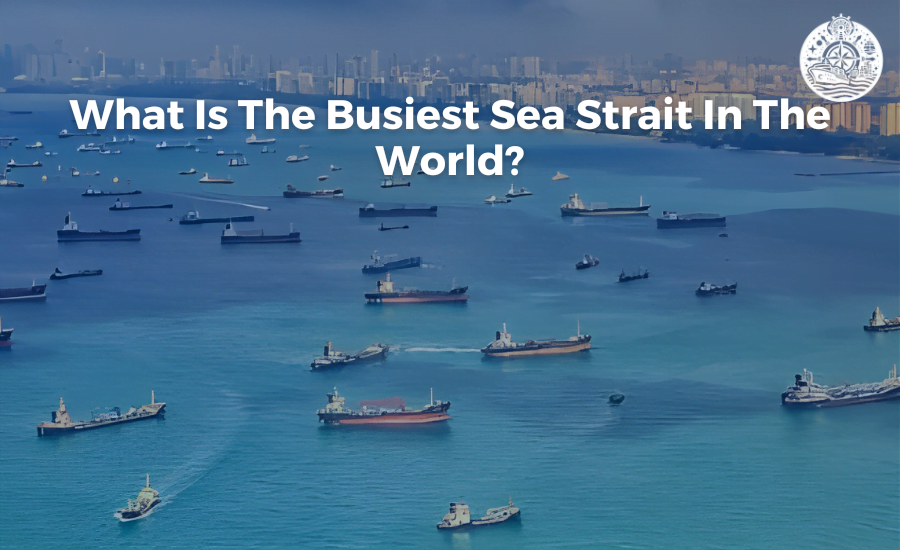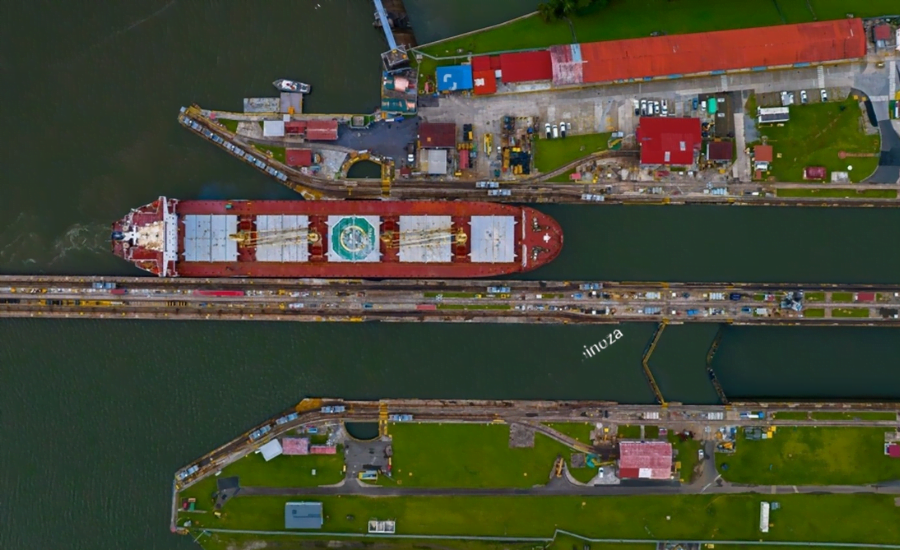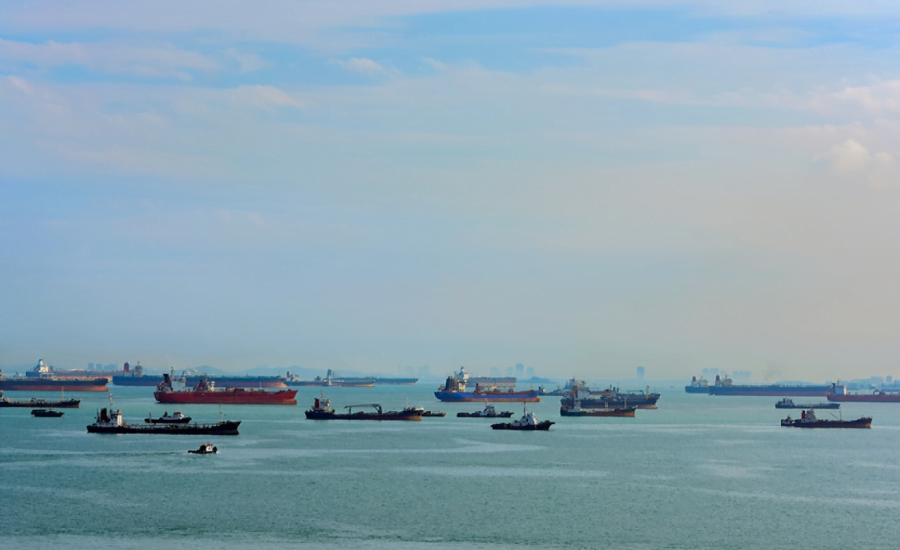
Maritime shipping routes are central to international trade. According to the IMO, around 90% of world trade relies on maritime transport. A total of 4,444 natural and man-made routes make important contributions to the cargo industry, but some routes are busier and more important than others because they enable busiest sea trade routes. The world’s busiest shipping routes are
1. Asia-United States

The Panama Canal facilitates important trade between Asia and the United States, with the Asia-United States East Coast being the busiest sea maritime trade route. The Panama Canal serves as a direct connection point for ships travelling between the Atlantic and Pacific Oceans that would otherwise have to bypass Cape Horn and the southern tip of South America. This saves each vessel approximately 2,000 to 8,000 nautical miles per trip. This makes this busiest sea route one of the most strategically constructed man-made routes in the world.The 2016 expansion widened and deepened the existing route and added two new sets of locks, one on the Atlantic and one on the Pacific side, extending the existing containment. The power has almost doubled. This allows the passage of larger ships of up to 14,000 TEU, significantly increasing the cargo volume on this trade route.
According to official statistics, in 2020, the Panama Canal transported approximately 259,837,318 tons of goods, including coal, grain, minerals, metals, crude oil, fuels, and chemicals, in her 12,245 shipments. To transit through the Panama Canal, ships must pay tolls and surcharges depending on their parameters. For example, in 2020, a freshwater surcharge will be imposed on all vessels passing through the canal.
2. Asia-Europe

One of the busiest sea trade routes in the world, the Suez Canal is also the fastest and most direct trade link between Asia and Europe, providing transport for energy, raw materials, parts, and Consumer goods are the main means of trade. Transportation of goods. In 2020, approximately 19,000 ships sailed this 193-kilometre route, accounting for 12% of global trade and 30% of global container traffic. The Suez Canal is also a major regional transportation hub for oil and hydrocarbons from Asia and the Middle East to Europe, transporting approximately 7-8% of the world’s oil and 8% of liquefied natural gas.
Due to the large volume of trade between Asia and Europe, almost all mega-ships are used on this route after their first commissioning. This is also one of the reasons why the Suez Canal blockage was a major obstacle to global trade in 2021. Due to the recent conflict between Russia and Ukraine, freight forwarders are now taking longer routes through the Middle East to avoid this region.
The blockage of the Suez Canal by the 400-metre container ship Ever Given in March 2021 highlighted its importance to the global trading community. Industry experts say the blockage has disrupted global trade along the Asia-Europe route for about six days, costing the industry about $54 billion. For vessels that rerouted, their range was further extended by approximately eight days. Like the Panama Canal, the Suez Canal also has several tolls, which vary depending on the row of containers on the weather deck, for example. For example, since November 1 this year, LNG tanker rates have been reduced.
3. Europe – United Kingdom

It is estimated that 22% of the U.K.’s imports from the E.U. and 30% of U.K. exports to the E.U. pass through the Strait of Dover, making it a key trade link between Europe and the U.K. Total trade between the U.K. and E.U. countries are estimated at around $123 billion, representing 25% of trade between these two regions, with the main items being postal and courier services, computers, and electronics; it is transported by transportation equipment.
The Channel is at the narrowest point of the English Channel, marks the boundary between the English Channel and the North Sea, and separates the United Kingdom from continental Europe. Therefore, this route also provides the shortest transport time for cargo units, reducing the transport time from 210 minutes to 90 minutes. All ships passing through a British port to enter a European port or entering the North Sea and Baltic Sea through the English Channel must pass through the Strait of Dover. The Port of Dover, on the British side of the Straight, and the Port of Calais, on the French side, are considered two of the busiest sea in the world. This makes the route one of the world’s busiest, with an estimated 400 merchant vessels sailing each day.
4. North America – Canada

The St. Lawrence Seaway facilitates shipping between the waters of the United States and Canada, especially into Upper Canada. This route directly services smaller ports. And allows cargo to be transported to its final destination rather than being loaded at larger ports further away. This makes it a centre of international trade between the United States and Canada. She sailed 1,900 miles from Canada’s Lake Ontario to New York. Serving major ports in Canada and the United States, including Ontario, Illinois, Michigan, Minnesota, Ohio, Vermont, and Wisconsin.
The sea route handles 40 million to 50 million tonnes of cargo annually. Including iron ore, grain, mining products, liquid bulk energy products, dry bulk, and general cargo. Compared to the next most expensive mode of transportation, shipping via the St. Lawrence Seaway can save approximately $3.Six billion in transportation costs. This is a significant saving, considering the annual cargo throughput is between 40 and 50 million tonnes. In addition to reducing costs, the St. Lawrence Seaway made transportation between the United States and Canada safer and increased trade opportunities between the two countries. Previously, narrow sea lanes have been widened to make them safer and easier to navigate.
5. Intra-Asia

Forming the most important and largest shipping route between the Indian Ocean and the Pacific Ocean. The Strait of Malacca is an important shipping route to and from Asia. The railway connects three of Asia’s largest economies, India, China, and Japan. With each other and with other important Asian economies such as Thailand, Indonesia, Malaysia, the Philippines, Singapore, Vietnam, Taiwan, and South Korea. It is an important artery for transportation to Asian countries. It handles a quarter of the world’s maritime trade and handles approximately 50,000 ships annually. Goods transported include products made in China, Indonesian coffee charcoal, and palm oil.
The Strait of Malacca is also the shortest shipping route between Persian Gulf suppliers. And Asia’s major economies, allowing large volumes of oil to be transported along this route. According to the U.S. Energy Information Administration, nearly 61%, or one-third, of the world’s oil production. Passes through the sea route through the Straits of Malacca, making it the world’s second-largest oil trade control hub. From an economic perspective, trade flows from the Strait of Malacca are particularly important for China. It serves as a shipping route for energy products from the Middle East and raw materials from Africa. And China has invested billions of dollars in mining and infrastructure projects.
Local Charges and Other Surcharges
For all waterway charges and local charges on a trade route. The carrier charges additional charges and tolls in addition to the transport charge. A freight broker, 3PL, or online calculator can help you estimate future surcharges for various types of freight and shipments. The trade routes listed above are just a handful of the world’s shipping routes. As the global trade industry grows. So too does the shipping industry, increasing the complexity of transporting goods along maritime routes.
Therefore, businesses and shippers need better ways to transport goods along critical trade routes. Logistics technology providers like Freightify can help you find the best routes and deals to ship your goods. Technology solutions and tools not only provide the most accurate shipping rates. But also the ability to submit quotes and receive reservations digitally. This gives customers complete control over their transportation and helps them manage the myriad tasks. Associated with transporting goods across busiest sea routes today.










